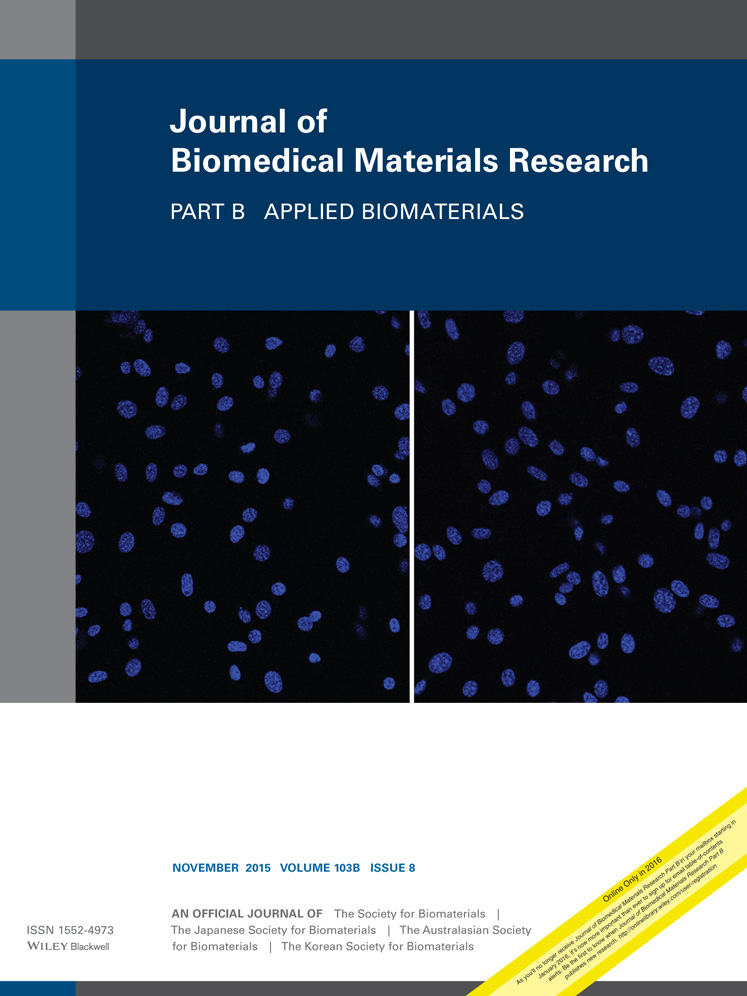Calcium and phosphate release from resin-based materials containing different calcium orthophosphate nanoparticles
Abstract
The study compared ion release from resin-based materials containing calcium orthophosphates. Amorphous calcium phosphate (ACP), dicalcium phosphate anhydrous (DCPA), dicalcium phosphate dihydrate (DCPD), and tricalcium phosphate (β-TCP) nanoparticles were characterized by X-ray diffraction (XRD), transmission electron microscopy (TEM), dynamic light scattering (DLS), and surface area (nitrogen adsorption isotherms, BET method). Nanoparticles were added to a dimethacrylate-based resin and materials were tested for degree of conversion (DC) and calcium/phosphate release up to 28 days under pH 5.5 and 7.0. Data were analyzed by ANOVA/Tukey test (alpha: 0.05).The crystallinity of DCPA, DCPD, and β-TCP were confirmed, as well as the ACP amorphous nature. DCPD and β-TCP presented larger agglomerates than DCPA and ACP. The surface area of ACP was 5–11 times higher than those of the other nanoparticles. Materials showed similar DC. The material containing ACP released significantly more ions than the others, which released similar amounts of calcium and, in most cases, phosphate. Ion release was not affected by pH. Calcium release decreased between 7 and 21 days, while phosphate levels remained constant after 14 days. In conclusion, ACP higher ion release can be ascribed to its high surface area. DCPA, DCPD, and β-TCP had similar performances as ion-releasing fillers. © 2015 Wiley Periodicals, Inc. J Biomed Mater Res Part B: Appl Biomater, 103B: 1670–1678, 2015.




